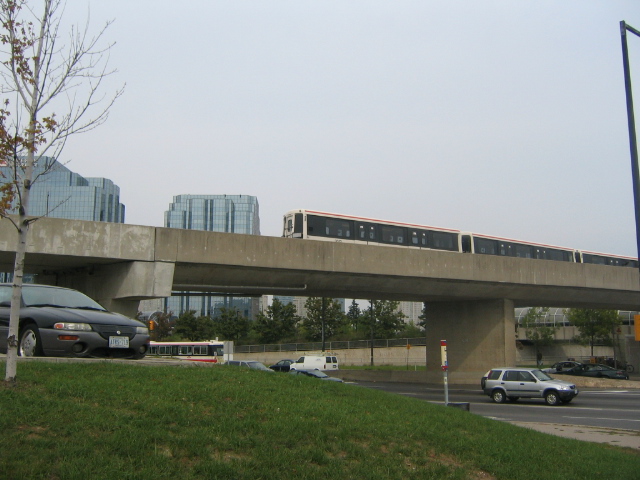D
Duck
Guest
No. Just no.
Why? You'd rather have dirty underground public-toiletesque subways?
No. Just no.

Duck, new shit was tried before in this city. We "embraced the future" and ended up with an expensive, obsolete transit line that was never extended, failed to fulfil its promises, and is slated to be replaced.

Lets just stick with proven tech that the vast majority of cities are using. The DRL is the most important transit project in the GTA so how about we get it done properly instead of pursuing weird alternatives in an attempt to save money.

Or we could have invested in the infrastructure we had like others did, and would now have something like this:

Or we could have invested in the infrastructure we had like others did, and would now have something like this:

Short platforms and trains: is the SkyTrain Canada Line under built and nearing capacity?
http://www.vancitybuzz.com/2014/08/...-skytrain-canada-line-built-nearing-capacity/
Most Canada Line platforms are only 40 metres long and expandable to 50 metres. At 40 metres, this means the platforms can only fit two-car trains at any one time, although an allowance for a 10 metre extension will give it the capability to accommodate one additional small car to create a three-car fully articulated train.
Platform crowding is already becoming an issue at the system’s busiest stations while passenger flow and circulation is also hampered by small and single entrances, cramped ticketing concourses, narrow staircases and an insufficient number of escalators. The ability to expand platform lengths beyond 50 metres and expand the footprint of the passenger circulation area of stations is largely curtailed by how eight of the 16 stations are built underground with few allowances. Tunnel ventilation systems, utilities, track turns, and steep changes in track grades forbid a major extension of the platforms without digging up the road again – a venture that is likely financially and economically unfeasible.
Service reliability and train frequency is also impaired by the shortsighted decision to single-track the final 640 metres of elevated guideway before both terminuses at Richmond-Brighouse and YVR-Airport Stations. That meant the single-tracking of both of the southern terminus stations, despite being some of the line’s most used stations.
The decision makers and planners of the day lacked the foresight needed to ensure the system would be designed with excess buffer capacity to allow for both planned and unplanned growth – or at the very least, be given the capability of significant expansion.
Imagine these monstrosities going down King Street downtown.
The Canada Line isn't SkyTrain (ICTS) technology. The capacity issue isn't the fault of the technology on that line, but of the requirements demanded by the province. It should be an illustration of why a rapid transit line being "below capacity" isn't such a bad thing.




